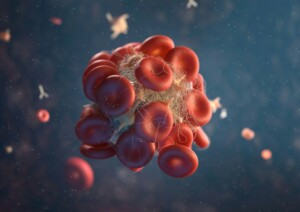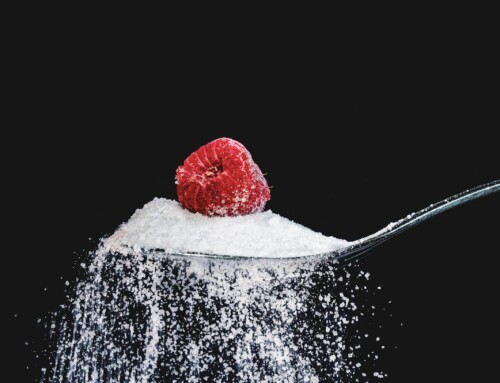CO2 Is Beneficial For Your Workouts
Why Carbon Dioxide Is Not Just A Waste Product

The Benefits of CO2 in the Bloodstream for High-Intensity Exercise
Topics At A Glance:
- The Role of CO2 in the Body
- CO2 and Oxygen Delivery
- Improved Blood Flow
- Enhanced Buffering Capacity
- Stimulation of Breathing
- Potential Concerns
The Role of CO2 in the Body
Carbon dioxide (CO2) is often viewed merely as a waste product of metabolism, but it plays several crucial roles in the body, especially during high-intensity exercise. When we exercise, our muscles produce CO2 as a byproduct of energy production. This increase in CO2 levels in the bloodstream is not only an expected result of metabolic activity but it also has several beneficial effects that can enhance your performance and endurance.
CO2 and Oxygen Delivery
Most people don’t realize that one of the primary benefits of increased CO2 levels during exercise is its effect on oxygen delivery. In the bloodstream, CO2 influences the release of oxygen from hemoglobin in the blood through the Bohr effect. Understanding that the way to truly improve cardiovascular performance has more to do with helping hemoglobin RELEASE it’s grip on oxygen at the cellular level is the metabolically trainable portion and that ZeroForce High Intensity Exercise is likely the best way to improve this. (We’ve discussed elsewhere in this blog).
Also, when CO2 levels rise, it lowers the blood pH, causing hemoglobin to release oxygen more readily. This means that during high-intensity exercise, when your muscles need more oxygen, the elevated CO2 levels help ensure that oxygen is efficiently delivered where it’s needed most.
Improved Blood Flow
CO2 also acts as a vasodilator, meaning it helps widen blood vessels. This widening of blood vessels improves blood flow and helps deliver more oxygen and nutrients to the working muscles – a very good thing if you’re going to work to muscle failure. Enhanced blood flow also aids in the removal of metabolic waste products, such as lactic acid, which can contribute to muscle fatigue. Basically, the presence of CO2 in the bloodstream during intense exercise helps sustain performance by improving circulation.
Enhanced Buffering Capacity
During high-intensity exercise, the body produces not only CO2 but also lactic acid, which can lower blood pH but also contribute to muscle fatigue. In its amazing wisdom, the body has a natural buffering system that helps neutralize this acid, and CO2 plays a key role in this process. The bicarbonate buffering system involves the reaction of CO2 with water to form carbonic acid, which then dissociates into bicarbonate and hydrogen ions. This buffering system then helps maintain a stable pH in the blood, allowing for sustained muscle function during prolonged exercise. Brilliant!
Stimulation of Breathing
One of the reasons we are so careful about your proper breathing at our facility in San Francisco is because increased CO2 levels in the blood also stimulate the respiratory center in the brain, enhancing the rate and depth of breathing. This increased ventilation helps expel CO2 more efficiently and brings in more oxygen, which is crucial during high-intensity exercise. Nose-breathing will improve this action even further – try it on your next workout.
By regulating breathing, CO2 ensures that the body can meet the increased oxygen demands of working muscles and maintain optimal performance.
Potential Concerns
While CO2 has several benefits during high-intensity exercise, there are also areas of concern:
Hypercapnia:
Excessive CO2 levels in the bloodstream, known as hypercapnia, can occur if the body cannot effectively expel CO2. This condition can lead to symptoms such as dizziness, shortness of breath, and confusion. In severe cases, it can cause respiratory acidosis, a dangerous condition where the blood becomes too acidic. High-intensity exercise should always involve an experienced trainer to help watch for situations like this.
Asthma and Other Respiratory Conditions:
Individuals with asthma or other respiratory conditions may have difficulty managing increased CO2 levels during exercise. These conditions can impair the ability to expel CO2, leading to a buildup in the blood and exacerbating breathing difficulties.
Exercising in a proper environment without distractions is important way to help catch issues like this when you are maximizing your effort during your session.
Wrapping It Up
CO2 is not just a metabolic waste product but a critical component that supports high-intensity exercise. By enhancing oxygen delivery, improving blood flow, buffering lactic acid, and stimulating breathing, CO2 helps athletes perform at their best.
However, it is essential to be aware of the potential risks, especially for those with underlying respiratory conditions. Understanding the dual role of CO2 can help optimize training and performance while ensuring safety and health.
If you’re interested in seeing how true evidence-based exercise can help you achieve fitness goals in a safe manner, click here to contact us at DeSisto Strength Training.





